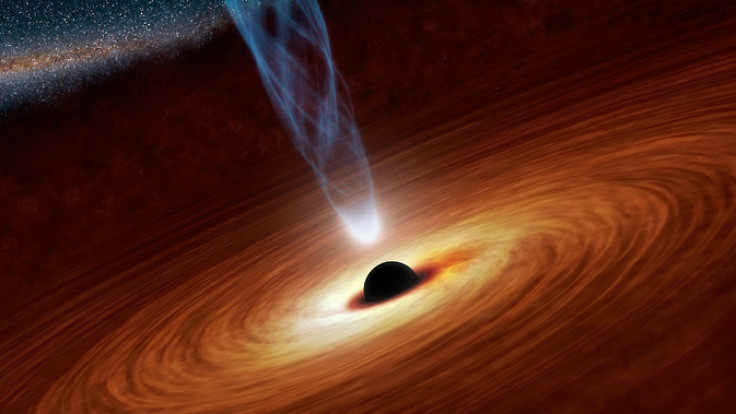Nasa X-Ray Telescope Captures Rare Event of Blurring of Light Near Black Hole

NuSTAR, or the Nuclear Spectroscopic Telescope Array, has returned rare images of a supermassive black hole's gravity pulling at X-ray light from the corona, and causing the blurring of light.
The black hole Markarian 335, or Mrk 335, is about 324 million light-years from Earth in the direction of the Pegasus constellation. It is one of the hungriest black holes whose mass and spin has been measured. It packs 10 million times the mass of our sun into a region only 30 times the diameter of the sun, and it spins so rapidly that "space and time are dragged around with it" says the Nasa release.
It was recently seen that the corona had collapsed toward the black hole but since then the black hole has been tugging at the X-rays emitted, resulting in extreme blurring and stretching of the X-ray light.
Nasa's Swift satellite has monitored Mrk 335 for years, and recently noted a dramatic change in its X-ray brightness. NuSTAR was put on the job, to take a look at high-energy X-rays from this source in the range of 3 to 79 kiloelectron volts. At this energy range astronomers can take a detailed look at what is happening near the 'event horizon', the region around a black hole from which even light cannot escape gravity's grasp.
Coronas are believed to contain particles travelling at the speed of light. Looking at the corona scientists hope to study the light-bending effects of the theory of relativity.
The NuSTAR telescope has been collecting X-rays from black holes and dying stars for the past two years. The earth orbiting telescope array studies the universe in high energy X-rays. Launched in 2012, NuSTAR augments the observations made by ground-based observatories as well as X-ray telescopes such as Chandra and XMM-Newton that scan the universe at low X-ray energy levels.
© Copyright IBTimes 2024. All rights reserved.





